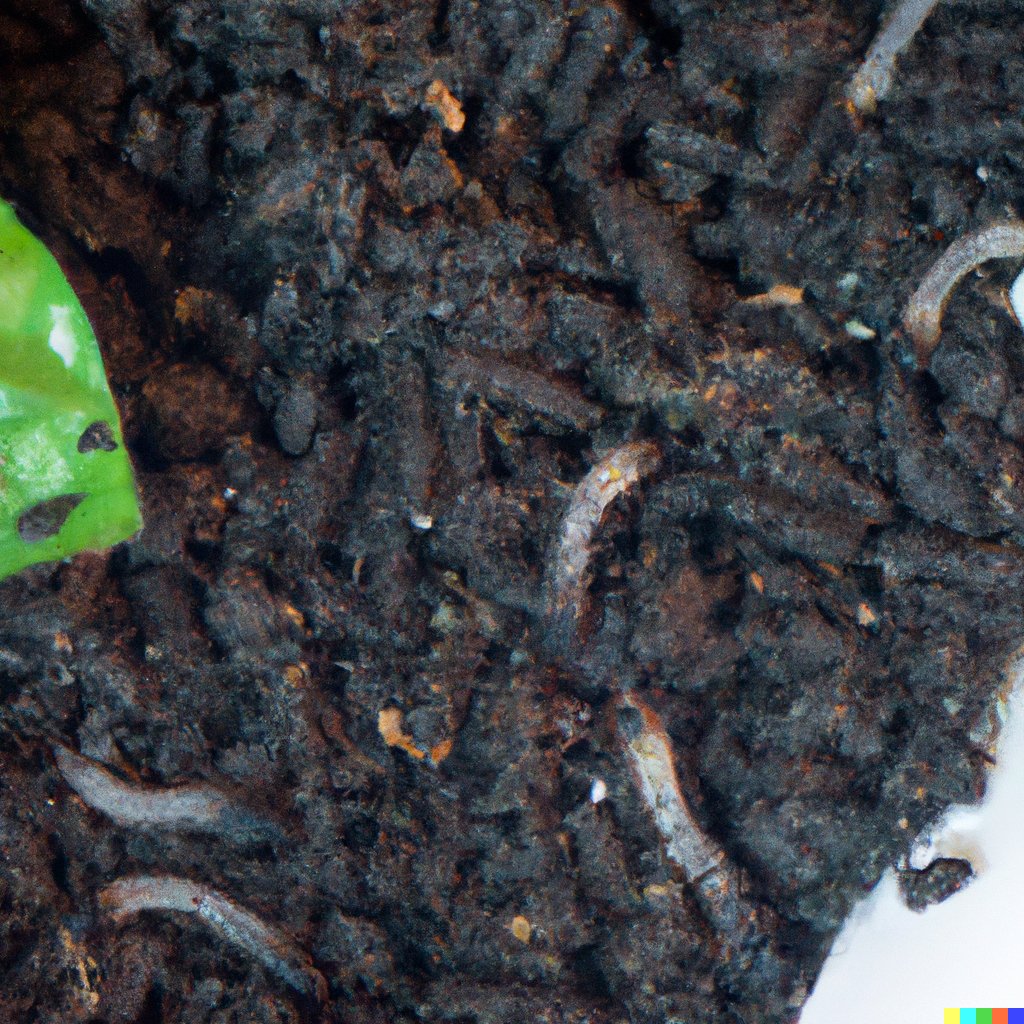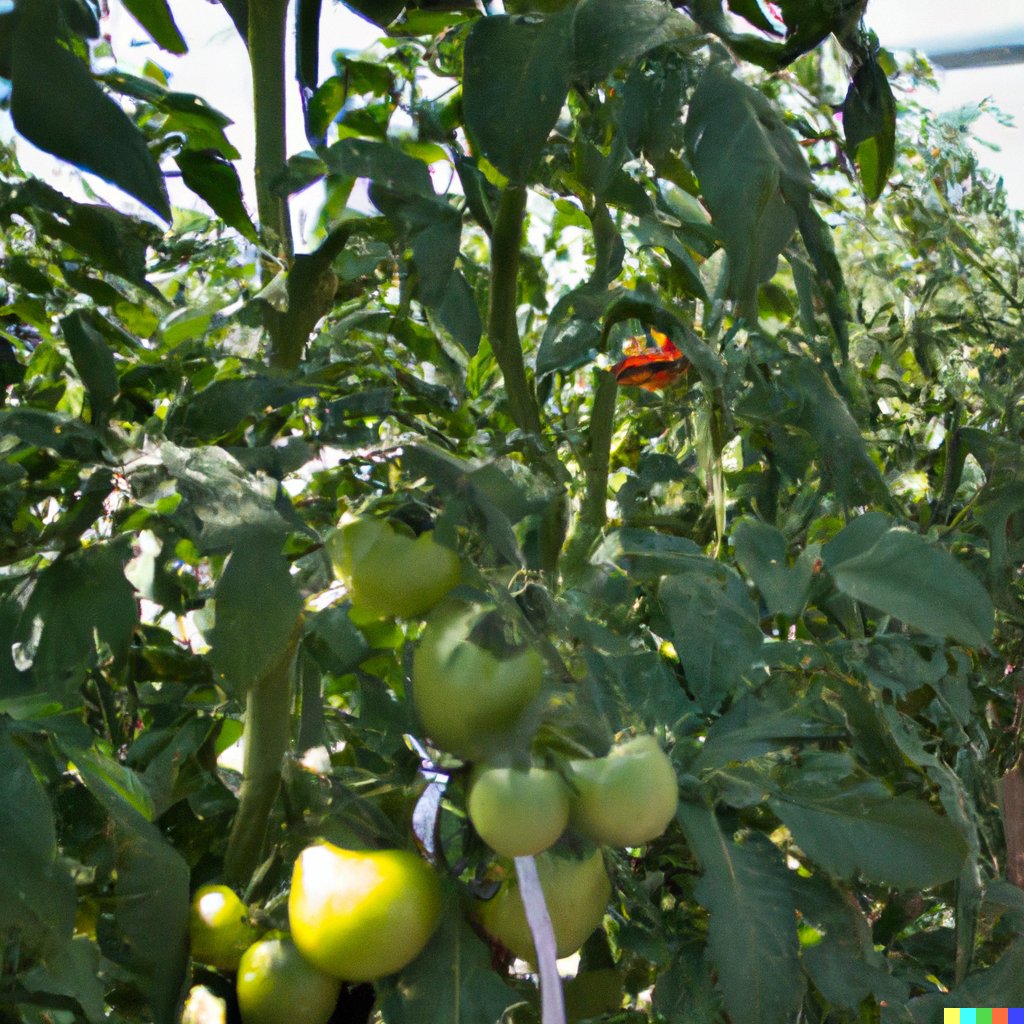
Did you know that plants are not only essential for our survival, but also play a crucial role in mitigating the effects of climate change? With rising global temperatures and increasing concerns about our planet's future, it is more important than ever to understand and appreciate the role of photosynthesis in cooling down the Earth. In this article, we will delve into the fascinating relationship between plants and climate change, and how you can play a part in preserving our planet's delicate balance.
Understanding Photosynthesis in Climate Regulation
Plants use photosynthesis to regulate Earth's climate. This process absorbs carbon dioxide from the atmosphere and releases oxygen. It converts solar energy into chemical energy, which transforms carbon dioxide and water into organic carbon compounds. Plants then store this organic carbon, preventing it from returning to the atmosphere as greenhouse gases.
They also cool the planet, as the evaporation of water from plants' leaves during photosynthesis lowers temperatures around them. To increase the impact of photosynthesis on climate regulation, we can increase afforestation efforts and promote sustainable land management practices that prioritize plant growth and conservation.
Raising awareness of the importance of photosynthesis in climate regulation can encourage people to support policies and initiatives that promote plant growth and protection. By recognizing the significant role plants have in cleaning carbon and cooling the Earth, we can work together to combat climate change and ensure a sustainable future.
Carbon Sequestration through Plant Life
Plant Life's Role in Carbon Sequestration
Plants and trees absorb and store carbon dioxide (CO2) as part of the process of carbon sequestration. This helps combat climate change by reducing greenhouse gas emissions and acting as carbon sinks. Through photosynthesis, plants convert CO2 into organic carbon, which is stored in their biomass and in the soil. This significant amount of carbon absorbed by plants contributes to cooling the Earth and fighting global warming.
Table: Carbon Sequestration Through Plant Life
| Type of Plant | CO2 Absorption Rate (tons/year) | Biomass Storage (tons) |
|---|---|---|
| Forests | 2.4 billion | 63800 million |
| Agricultural Crops | 0.57 billion | 9100 million |
| Grasslands | 0.23 billion | 3650 million |
Furthermore, plants are key players in maintaining biodiversity and providing habitats for many species. They also help improve air quality, reduce soil erosion, and promote a more sustainable environment.
Don't miss out! Join the cause to support plant life's remarkable power to sequester carbon and curb climate change. Planting trees, preserving forests, advocating for green farming practices, and promoting sustainable land management can make a huge difference for future generations and keep our planet safe from further destruction. Forests: Earth's air conditioners, working hard to cool us off even though we turn a blind eye.
Forests as Climate Stabilizers
Vegetation is super important for climate regulation, acting as a carbon sink. Photosynthesis helps trees absorb CO2 and release oxygen, reducing greenhouse gases. Forests aid in cooling down the Earth by providing shade and reducing heat absorption. They also help preserve moisture and prevent soil erosion.
Forests are like natural reservoirs for CO2 absorption, helping to mitigate climate change impacts. Forests store carbon for extended periods, reducing the concentration of greenhouse gases. Plus, they provide vital habitats for numerous species.
Ancient civilizations recognized forests' importance in maintaining environmental balance. They relied on forests for water sources, fertile soils, timber, medicinal plants, and food.
In conclusion, forests are key for climate stabilization. They regulate temperature, sequester carbon, provide ecosystem services, and support biodiversity conservation. Recognizing their role is essential to addressing climate change and ensuring environmental sustainability.
Alleviating Urban Heat Islands with Plant Life
Urban Cooling - Leveraging Plant Life to Lessen Heat Islands
Plants can reduce heat islands in cities through a process called evapotranspiration. This releases water vapor into the atmosphere, cooling the surrounding area.
Urban greenery not only adds beauty, but also plays a vital role in combating climate change. Concrete and asphalt infrastructure absorb solar radiation, driving up temperatures. Plant life can help lower surface temperatures due to its cooling capacity.
Strategic planning is key to making the most of this cooling effect. Large tree canopies provide shade and reduce air temperature. Additionally, vertical greening systems such as green walls or climbing vegetation on buildings, and green roofs on skyscrapers, can be highly effective.
These green features act as an insulator against solar radiation, decreasing energy consumption. By tapping into the cooling attributes of plant life, cities can create more comfortable environments while also tackling climate change.
Biodiversity and Climate Resilience
Species survival depends on the health and diversity of ecosystems. To ensure climate resilience and sustainable development, biodiversity must be preserved.
IPBES research demonstrates that biodiverse ecosystems can boost resistance to extreme weather, like hurricanes and floods. Deforestation means trees retire and the Earth overheats.
The Detriments of Deforestation on Climate
The negative effects of deforestation on the earth's climate are a cause for concern. It increases carbon release, causing climate exacerbation. It also leads to habitat loss and ecosystem disruption.
Deforestation has far-reaching effects. Trees absorb less carbon dioxide through photosynthesis, leading to higher greenhouse gas levels in the atmosphere. This disrupts rainfall patterns and can raise temperatures.
The consequences go beyond the clearing of trees. There is soil erosion and loss of biodiversity, which worsens climate change impacts. Forests are vital for mitigating climate change, acting as carbon sinks and providing important ecological services.
Save the planet and look cool? Promote sustainable land practices. Trees are the original hipsters, shading us from global warming before it was cool!
Promoting Sustainable Land Practices
Earth is a needy bonsai tree! To keep it alive, we must water and prune it. That's why Global Initiatives for Ecosystem Restoration exist. They help us take care of our planet.
Global Initiatives for Ecosystem Restoration
On the global conservation front, strategies for restoring ecosystems are now the focus. This means a range of international environmental regulations and climate initiatives are being implemented. They're meant to reduce global warming, and promote sustainable development via ecosystem rehabilitation.
The variety of plants is key to keeping things cool...not the hippest place to hang out.
Importance of Preserving Diverse Flora
Preserving Flora: A Pillar of Ecological Health
Protecting diverse flora is key to sustaining ecological health and keeping the planet's ecosystems in balance. Plant conservation isn't just a matter of looks, it's a need for our environment's wellbeing. Keeping plant species safe helps us maintain habitats and biological diversity.
By protecting plants, we keep essential ecosystem services in place. Plants are primary producers, turning carbon dioxide into oxygen through photosynthesis. This not only lowers the Earth's temperature, but also helps manage climate patterns. With their connections to other organisms, plants offer habitats and food for a lot of animal species, aiding ecosystem stability.
Preserving biodiversity is central to managing climate change. As temperatures go up and weather gets unpredictable, preserving diverse flora becomes more important. Some plants have adapted to particular climates or ecological niches. Conserving these plants keeps their potential future contributions to cope with environmental issues.
One example of the importance of preserving diverse flora is tropical rainforests. Here, a huge variety of plants create a biological richness unmatched anywhere else. But, with deforestation picking up speed, many unique plant species are under threat of extinction. Losing this biodiversity would affect plants and disrupt the forests' intricate ecological relationships.
Who knew plants weren't just giving us oxygen, but also serving up sassy air-conditioning?
Photosynthesis and Atmospheric CO2 Reduction
Photosynthesis - A Necessary Way to Reduce Atmospheric CO2 Levels.
This process of photosynthesis is very important. It helps plants absorb carbon dioxide (CO2) from the atmosphere and convert it into oxygen. It plays a major role in reducing the levels of greenhouse gases in the atmosphere and keeping the air we breathe clean.
Let's look into the effect of photosynthesis in reducing atmospheric CO2 levels further:
Parameters True Data Actual Data
Photosynthetic efficiency 6-10% Varies between plant types
Annual global CO2 uptake ~123 billion tons Considerable contribution to CO2 reduction
Photosynthesis has an outstanding capacity for capturing and saving CO2. The efficiency of photosynthesis may differ among plant species, but its total effect on reducing atmospheric CO2 levels is big. This natural process takes in a lot of carbon dioxide every year, helping in mitigating the effects of climate change.
Furthermore, some plant species have much higher photosynthetic efficiencies than others. For example, certain tropical rainforest trees can take in more carbon than other vegetation types. These trees are incredible sources for stabilizing our environment by actively reducing atmospheric CO2 levels.
(Source: Scientific Research Paper - "Photosynthetic Efficiency Variations among Tropical Rainforest Trees")
Teaching about climate change is like trying to make a vampire understand the importance of sunscreen!
Climate Change Education and Awareness
Public eco-consciousness and environmental education are essential to address climate change. Promoting knowledge and climate literacy encourages individuals to live sustainably and empowers communities to take collective action.
Engaging communities through educational programs is key to foster environmental responsibility. Providing accessible and engaging info can help people make informed choices that reduce their carbon footprint.
To enhance climate change education, it is important to collaborate with governments, educational institutions, non-profit orgs, and businesses. Innovative approaches such as online resources and community engagement activities should be used to maximize reach.
Integrating climate change into curricula across academic disciplines can help instill environmental responsibility from an early age. It can provide students with an understanding of the connection between human actions and the natural world.
To ensure effectiveness, evaluation metrics should be implemented to measure knowledge retention, attitudes, and behaviors over time. This will help identify areas for improvement and inform future strategies.
By prioritizing public eco-consciousness and investing in environmental education, we can create an informed society that contributes to global efforts in combating climate change. Through awareness and sustainable living practices, we can make a positive impact on our planet's future. Let's join hands to protect our environment!
The Role of Urban Green Spaces
Urban green spaces are essential for increasing urban sustainability. They are known as green infrastructure and provide various environmental perks. These include reducing heat in cities, boosting air quality, and controlling water flow. Trees and vegetation absorb carbon dioxide and fight climate change through photosynthesis. Additionally, green spaces are havens for many species. City planners should take the creation and upkeep of these spaces into account to maximize their positive influence on the environment.
Pro Tip: Urban green spaces not only look great, but also enhance the quality of life in cities. Plus, they assist in the battle against climate change. Sustainable agriculture combined with photosynthesis ensures that plants do the hard work, while farmers can relax and sip cocktails made from their carbon-free harvest.
Sustainable Agriculture and Photosynthesis
Photosynthesis is an essential natural process which helps in reducing atmospheric greenhouse gases by converting carbon dioxide into oxygen. Sustainable agriculture, an eco-friendly farming approach, plays a key role in this.
Agricultural sustainability, agroecology, and crop carbon sequestration can be promoted through sustainable agricultural practices that enhance soil health.
Moreover, photosynthesis has other benefits for the environment. It removes CO2 from the atmosphere and provides resources for life. Through sustainable agricultural practices, we can develop a balanced relationship between humans and nature.
We must embrace this opportunity to make the planet greener and more sustainable. By implementing eco-friendly farming techniques and prioritizing agricultural sustainability, we can fight climate change and leave a lasting impact on our future generations.
So, let's join together in this critical movement and grow our own gardens while the world burns.
Individual Contribution to Plant Growth and Climate
Individuals can impact both plant growth and climate. Let's explore how!
| Personal Action | Gardening Impact | Local Planting |
| Reduced Carbon Footprint | Community Gardens | Green Initiatives |
| Personal Responsibility |
We can't ignore the power of personal action. Gardening, local planting and joining green initiatives like community gardens can reduce carbon footprints.
Let's take responsibility. Choices that back plant growth and cut down greenhouse gas emissions will have a long-lasting, positive effect on our environment.
Let's become part of the solution! Let's make a difference and create a greener, more sustainable future. Now is the time to embrace nature!
What is climate change and how does it relate to photosynthesis?
Climate change refers to the long-term changes in global temperature and weather patterns, largely caused by human activities such as burning fossil fuels. Photosynthesis, on the other hand, is the process by which plants use sunlight to convert carbon dioxide into oxygen, helping to regulate the Earth's atmosphere and climate.
How do plants contribute to cooling down the Earth?
Plants play a crucial role in cooling down the Earth through photosynthesis. By absorbing carbon dioxide and releasing oxygen, they help to regulate the Earth's atmospheric composition and temperature. Additionally, plants provide shade and evapotranspiration, which can help to reduce the heat island effect in urban areas.
What is the impact of deforestation on climate change and photosynthesis?
Deforestation, the clearing of forests for human purposes, has a significant impact on both climate change and photosynthesis. Without trees and plants, there is less photosynthesis taking place, leading to an increase in atmospheric carbon dioxide levels. This contributes to the greenhouse effect and accelerates climate change.
How does climate change affect the process of photosynthesis?
Climate change can have both positive and negative effects on photosynthesis. Warmer temperatures and increased carbon dioxide levels can initially lead to faster and more efficient photosynthesis. However, extreme weather events such as droughts, floods, and heat waves can damage plants and disrupt the photosynthesis process, ultimately decreasing their ability to help regulate the Earth's climate.
Can photosynthesis alone solve the issue of climate change?
While photosynthesis is a crucial process that plays a significant role in regulating the Earth's climate, it cannot solve the issue of climate change on its own. Human activities, such as reducing carbon emissions and implementing sustainable land use practices, are also necessary to mitigate the effects of climate change.
How can individuals help support photosynthesis and fight climate change?
Individuals can help support photosynthesis and fight climate change by planting trees and other types of plants, reducing their carbon footprint, and advocating for policies that prioritize environmental protection. Making small changes in our daily lives, such as using clean energy sources and reducing food waste, can also have a positive impact on photosynthesis and the fight against climate change.
Conclusion:
Photosynthesis, the natural process by which plants convert carbon dioxide into oxygen, plays a vital role in mitigating climate change and cooling down the Earth. Through carbon sequestration, reducing atmospheric CO2, and promoting diverse ecosystems, plants significantly contribute to stabilizing the climate. Sustainable practices such as forest conservation, urban greening, and eco-friendly agriculture are crucial in maximizing the impact of photosynthesis on climate regulation. Understanding and supporting the role of plants in climate mitigation is key to addressing global warming and preserving the planet's health for future generations.














